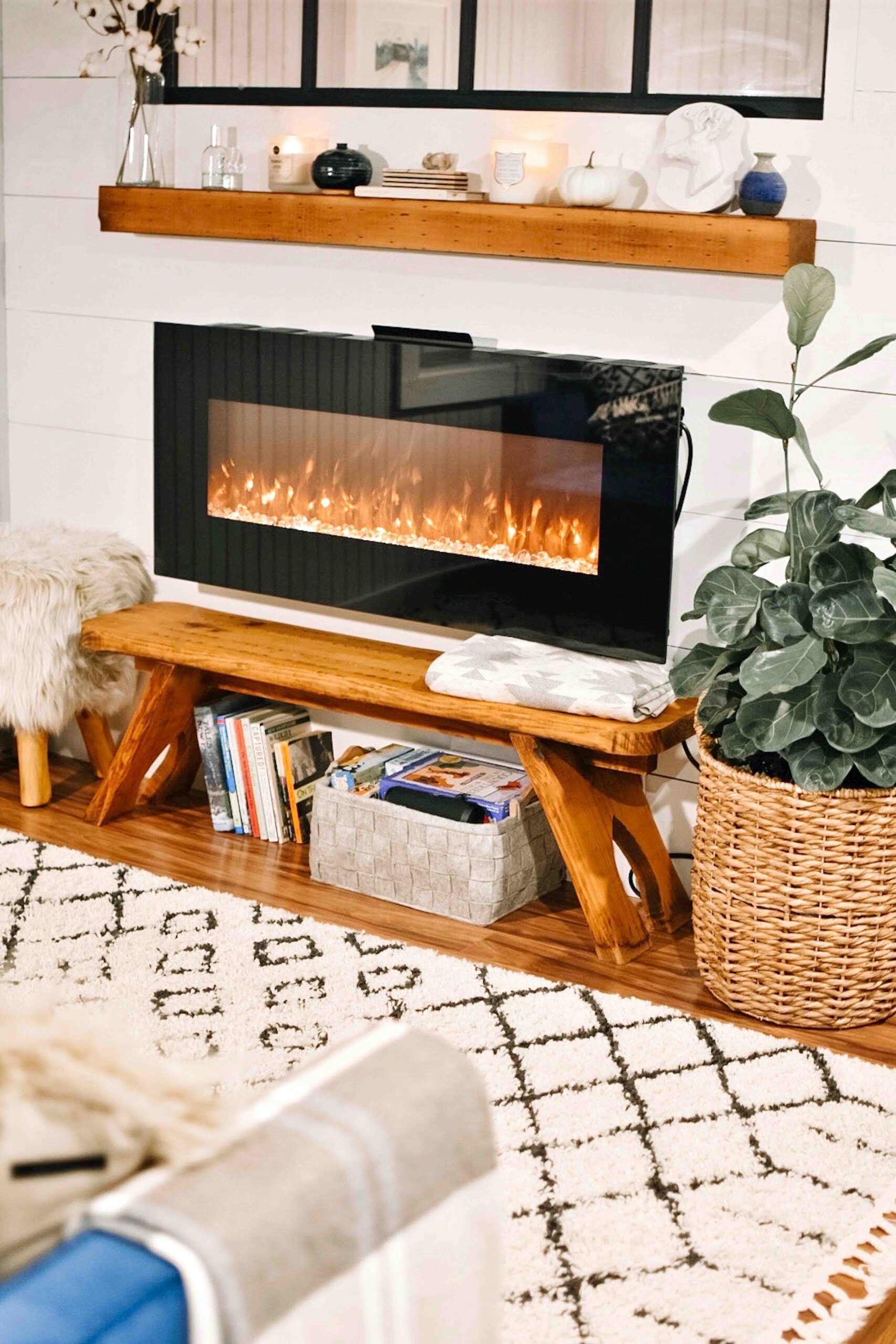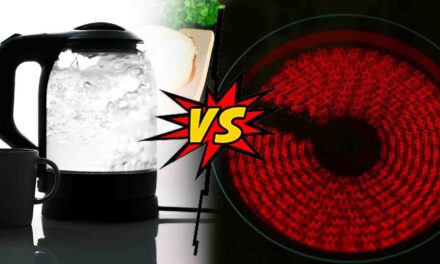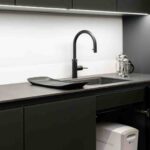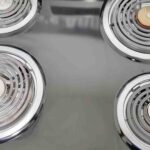As an Amazon Associate, I earn from qualifying purchases.
Both pellet stoves and electric fireplaces are popular options for heating homes. Pellet stoves use compacted wood pellets as fuel, while electric fireplaces use electricity to produce heat. Pellet stoves are known for their high efficiency and ability to provide consistent, long-lasting heat. They require regular maintenance to clean the ash and refill the pellet hopper. Electric fireplaces are convenient and easy to use, requiring only a power source. They are also low maintenance and can be easily turned on and off with a remote control. Regarding cost, pellet stoves may require more upfront investment due to the prices of the furnace and pellets, while electric fireplaces are generally more affordable.
Definition: Pellet Stove

A pellet stove is a type of stove that burns compressed wood or biomass pellets to create heat. These stoves are typically used as a heating alternative to traditional fireplaces or wood-burning stoves and are known for their efficiency and environmentally friendly operation.
The pellets used in pellet stoves are made from sawdust, wood shavings, and other biomass materials and are fed into the stove through a hopper. The stove then automatically feeds the pellets into a burn pot, igniting them and producing heat. Pellet stoves are famous for their convenience, clean-burning operation, and ability to heat a home efficiently.
Definition: Electric Fireplace

Electric fireplaces have gained popularity because of their convenience and energy efficiency. These fireplaces use electricity to produce heat and create the visual effect of a real fire with LED lights. They often come with adjustable settings for heat and flame intensity, allowing users to control the room’s ambiance.
Some electric fireplaces even come with remote controls for added convenience. Electric fireplaces do not require a chimney or venting, making them easier to install and maintain than traditional wood-burning or gas fireplaces. They are also generally safer, as there is no risk of flying sparks, soot, or carbon monoxide. Electric fireplaces provide a convenient and environmentally friendly option for homeowners looking to add a warm and cozy atmosphere to their living space.
How to Work A Pellet Stove?
Working a pellet stove is a simple and efficient way to heat your home. To get started, fill the hopper with wood pellets and fill it appropriately. Next, turn on the stove and set the thermostat to your desired temperature. The furnace automatically feeds pellets into the combustion chamber and ignites them to produce heat. It’s essential to regularly clean and maintain the furnace to ensure it runs efficiently and safely.
This includes cleaning the ash pan, emptying the ash drawer, and checking for any blockages in the ventilation system. Following the manufacturer’s guidelines for safe operation is also crucial to prevent any accidents or malfunctions. Finally, purchase high-quality wood pellets to ensure the best performance from your pellet stove.
How to Work An Electric Fireplace?
To work an electric fireplace, start by plugging it into a power outlet. Most electric fireplaces can be operated using a remote control or a control panel on the unit itself. Use the remote or the control panel to turn the fireplace on and off, adjust the heat settings, and adjust the flame intensity.
Some electric fireplaces also have a timer function that allows you to set a specific time for the fireplace to operate. It’s essential to follow the manufacturer’s instructions for properly using and maintaining your electric fireplace to ensure its longevity and safety. Ensuring that the area around the fireplace is free of any flammable materials and never leaving it unattended while it is in use is essential for safety.
Pellet Stove Pros and Cons
A pellet stove is a popular heating option for many homeowners. Some of the pros of using a pellet stove include its efficiency, as it burns cleanly and produces very little ash. It also offers a convenient and easy-to-use heating option, as pellets are readily available and quickly loaded into the stove. Additionally, pellet stoves can be cost-effective, as pellets are often less expensive than other heating fuels. However, there are also some cons to consider concerning pellet stoves. One potential downside is the need for electricity to operate the furnace, which can be a concern during power outages. There is also the regular maintenance and cleaning required for the stove and the possibility of mechanical issues.
Pros
- Efficiency: Pellet stoves are highly efficient, converting a high percentage of pellets into heat, making them cost-effective.
- Environmentally Friendly: They burn renewable wood pellets, a sustainable fuel source, emitting fewer greenhouse gases than traditional fossil fuels.
- Convenient: Pellet stoves often have automatic ignition and temperature control, offering convenience and ease of use.
- Clean Burning: Pellets burn cleanly with minimal smoke and ash, reducing indoor air pollution and the need for frequent cleaning.
- Even Heat Distribution: Pellet stoves distribute heat evenly throughout the room, providing consistent warmth without hot or cold spots.
- Compact Design: Their compact size makes them suitable for smaller spaces or as a supplemental heating source in larger rooms.
- Low Maintenance: Compared to traditional wood stoves, pellet stoves require less maintenance, with fewer creosote buildup and chimney cleaning needs.
Cons
- Dependence on Electricity: Pellet stoves require electricity, so they will only work during power outages if they have a backup power source.
- Maintenance: Regular maintenance is required, including cleaning the stove and removing ash, which can be more involved than other heating options.
- Pellet Storage: Storing pellets can require space, and purchasing them adds to ongoing costs compared to traditional firewood.
- Initial Cost: Pellet stoves can have a higher initial cost than traditional wood stoves or other heating options.
Electric Fireplace Pros and Cons
Electric fireplaces have several pros and cons to consider. On the positive side, they are easy to install and can be placed in any room with access to an electrical outlet. They also provide a clean, efficient heat source without venting or chimney maintenance. Additionally, they come in various styles and designs to complement any decor. However, there are some drawbacks to electric fireplaces. They may produce a different heat level than a traditional wood-burning fireplace, and some people find the artificial flames and logs less aesthetically pleasing. Additionally, they can be more expensive to operate than gas or wood fireplaces, as they rely on electricity to function.
Pros
- Easy Installation: Electric fireplaces are typically easier to install than traditional wood-burning or gas fireplaces.
- No Ventilation Required: Electric fireplaces don’t require ventilation systems, making them suitable for various living spaces since they don’t produce smoke or harmful fumes.
- Energy Efficiency: Electric fireplaces often offer energy-efficient heating options, allowing you to enjoy warmth without excessive energy consumption.
- Safe to Use: Electric fireplaces don’t involve real flames, reducing the risk of fire hazards and making them safer, especially for households with children or pets.
- Adjustable Settings: Many electric fireplaces come with adjustable settings, including flame brightness and heat intensity, allowing for customization based on personal preference and comfort.
- Portability: Electric fireplaces are often lightweight and portable, making them easy to move between rooms or take with you when relocating.
Cons
- Limited Heating Capacity: Electric fireplaces often have less heating capacity than traditional wood or gas fireplaces.
- Dependency on Electricity: They require a power source, making them unusable during power outages.
- Less Authentic Ambiance: While they mimic the appearance of real flames, some find electric fireplaces less authentic than traditional options.
- Initial Cost: Electric fireplaces can have a higher upfront cost than conventional heating options.
- Maintenance: Some electric fireplaces require occasional maintenance, such as bulb replacement or cleaning, which some users see as a downside.
Pellet Stove vs Electric Fireplace, Comparison! Which One Is Better?
Pellet stoves and electric fireplaces have unique advantages and considerations to consider when deciding on the best fit for your home. Pellet stoves provide a traditional fireplace experience with real flames and heat output but require regular maintenance and cleaning. On the other hand, electric fireplaces are easy to install and use and don’t require fuel or venting. They are also safer and more child-friendly.
Ultimately, the decision between the two comes from personal preferences, budget, and maintenance capabilities. If you prefer a more traditional fireplace experience and are willing to put in the effort for maintenance, a pellet stove may be the better option. However, an electric fireplace may be the better choice if you prioritize convenience, safety, and ease of use. It’s essential to weigh each option’s pros and cons to determine the best fit for your home.
Conclusion
In conclusion, deciding between a pellet stove and an electric fireplace ultimately depends on your needs and preferences. A pellet stove may be the better choice if you are looking for a more environmentally friendly option that provides a cozy, wood-burning ambiance. However, remember that it requires regular maintenance and access to wood pellets. On the other hand, if you prioritize convenience and ease of use, an electric fireplace may be the more suitable option for you. It requires minimal maintenance and can be easily controlled with a remote. Ultimately, it’s essential to consider factors such as cost, installation requirements, and heating needs before deciding.
As an Amazon Associate, I earn from qualifying purchases.









